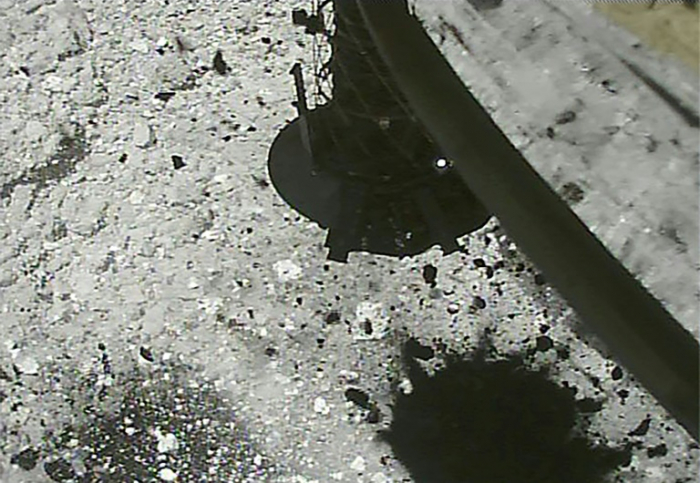The explosive mission is the riskiest yet attempted by the Japanese space agency's Hayabusa2 probe that aims to reveal more about the origins of life on Earth.
Hayabusa2 released the so-called "small carry-on impactor" -- a cone-shaped device capped with a copper bottom -- as scheduled, as the probe hovered just 500 metres (1,650 feet) above the asteroid Ryugu.
The impactor is programmed to explode 40 minutes later, propelling the copper bottom towards Ryugu, where it should gouge a crater into the surface of the asteroid that spins 300 million kilometres from Earth.
Hayabusa2 moved smartly away from the area to avoid being damaged by debris from the explosion or colliding with Ryugu.
As it did so it successfully released a camera above the site of the detonation that should be able to capture images of the event, sparking jubilant applause at Mission Control.
The camera should be able to transmit those images, but it is unclear when the first confirmation of the mission's success will come.
It will take two weeks for the probe itself to return to its "home position" near Ryugu after the detonation and impact.
"We are excited to see what will happen when the impactor collides with the asteroid," Takashi Kubota, engineering researcher at the Japanese space agency (JAXA), told reporters earlier this week.
The crater could be as large as 10 metres in diameter if the surface is sandy, or three metres across if it is rocky, according to JAXA scientists.
- 'Dragon Palace' -
NASA's Deep Impact project succeeded in creating an artificial crater on a comet in 2005, but only for observation purposes.
The aim of the crater on Ryugu is to throw up "fresh" material from under the asteroid's surface that could shed light on the early stages of the solar system.
The asteroid is thought to contain relatively large amounts of organic matter and water from some 4.6 billion years ago when the solar system was born.
In February, Hayabusa2 touched down briefly on Ryugu and fired a bullet into the surface to puff up dust for collection, before blasting back to its holding position.
The Hayabusa2 mission, with a price tag of around 30 billion yen ($270 million), was launched in December 2014 and is scheduled to return to Earth with its samples in 2020.
Photos of Ryugu -- which means "Dragon Palace" in Japanese and refers to a castle at the bottom of the ocean in an ancient Japanese tale -- show the asteroid has a rough surface full of boulders.
Hayabusa2 observes the surface of the asteroid with its camera and sensing equipment but has also dispatched two tiny MINERVA-II rover robots as well as the French-German robot MASCOT to help surface observation.
At about the size of a large fridge, Hayabusa2 is equipped with solar panels and is the successor to JAXA's first asteroid explorer, Hayabusa -- Japanese for falcon.
That probe returned with dust samples from a smaller, potato-shaped asteroid in 2010, despite various setbacks during its epic seven-year odyssey and was hailed as a scientific triumph.
















































